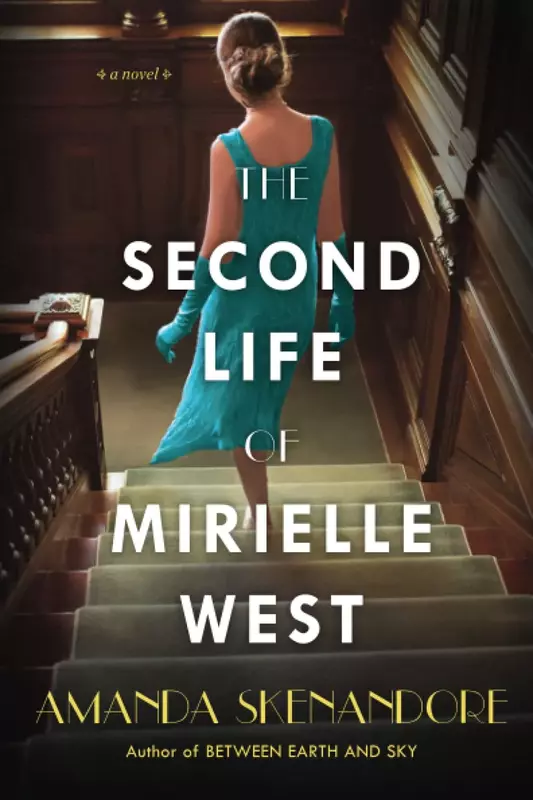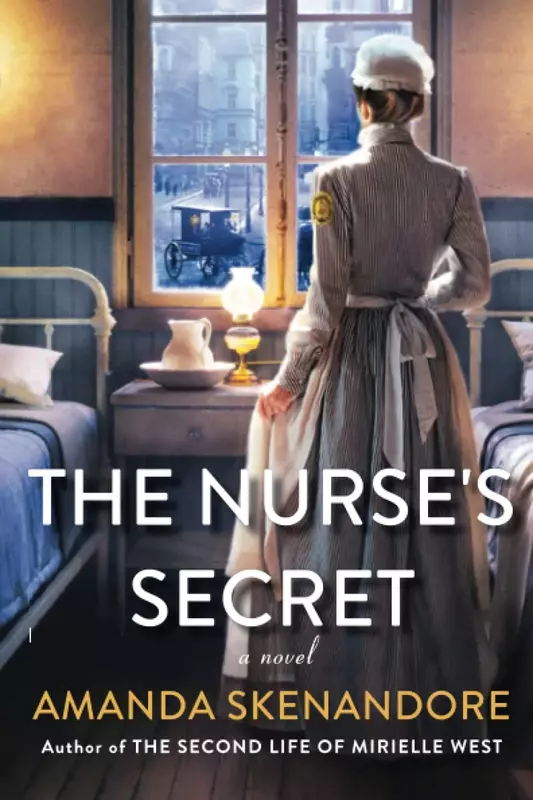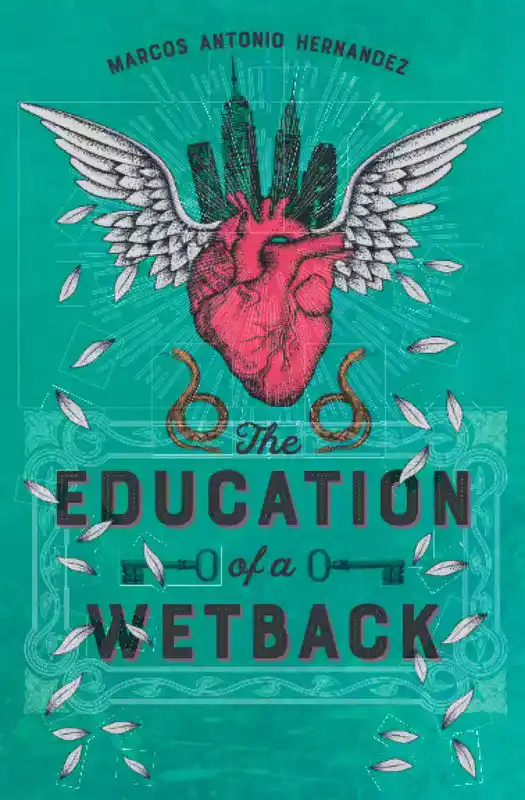This post may contain affiliate links. Read more here.
Book club questions for The House Is on Fire by Rachel Beanland explores the intricate dynamics of four lives intertwined by a tragic event.
Set in Richmond, Virginia in 1811 during the height of the winter social season, the book delves into the lives of Sally Henry Campbell, Cecily Patterson, Jack Gibson, and Gilbert Hunt as they navigate the aftermath of a devastating theater fire.
Be prepared to discuss themes of tragedy, redemption, morality, and resilience, as well as the historical setting of 1811 Virginia and its social and cultural context.
Consider how the characters of Sally Henry Campbell, Cecily Patterson, Jack Gibson, and Gilbert Hunt navigate the aftermath of the fire and the choices they must make. Reflect on their motivations, decisions, and the consequences of their actions. How do their individual stories intersect and influence each other? Discuss their struggles, challenges, and moments of redemption, and how these shape their journeys throughout the book.
Explore the moral dilemmas faced by the characters and the ethical implications of their choices. How do their actions reflect their values, beliefs, and circumstances? Discuss the concept of redemption and whether it is possible in the face of tragedy and adversity.
Get ready for a thought-provoking book club discussion filled with engaging conversations and meaningful reflections. The House Is on Fire offers a captivating and poignant exploration of tragedy, redemption, and the complexities of human nature. Let’s come together to share our thoughts, insights, and perspectives on this compelling novel.
I hope you will enjoy the following book club questions and reading guide for The House Is on Fire by Rachel Beanland! ✨
The Synopsis
Richmond, Virginia 1811. It’s the height of the winter social season, the General Assembly is in session, and many of Virginia’s gentleman planters, along with their wives and children, have made the long and arduous journey to the capital in hopes of whiling away the darkest days of the year. At the city’s only theater, the Charleston-based Placide & Green Company puts on two plays a night to meet the demand of a populace that’s done looking for enlightenment at the front of a church.
On the night after Christmas, the theater is packed with more than six hundred holiday revelers. In the third-floor boxes, sits newly-widowed Sally Henry Campbell, who is glad for any opportunity to relive the happy times she shared with her husband. One floor away, in the colored gallery, Cecily Patterson doesn’t give a whit about the play but is grateful for a four-hour reprieve from a life that has recently gone from bad to worse.
Backstage, young stagehand Jack Gibson hopes that, if he can impress the theater’s managers, he’ll be offered a permanent job with the company. And on the other side of town, blacksmith Gilbert Hunt dreams of one day being able to bring his wife to the theater, but he’ll have to buy her freedom first.
When the theater goes up in flames in the middle of the performance, Sally, Cecily, Jack, and Gilbert make a series of split-second decisions that will not only affect their own lives but those of countless others. And in the days following the fire, as news of the disaster spreads across the United States, the paths of these four people will become forever intertwined.
Based on the true story of Richmond’s theater fire, The House Is on Fire offers proof that sometimes, in the midst of great tragedy, we are offered our most precious—and fleeting—chances at redemption.
In love with books? Try audio books or writing classes for free for 30 days.✨
Book Club Questions for The House Is on Fire
I hope you and your book club will enjoy my discussion reading guide for The House Is on Fire by Rachel Beanland. ✨
- How does the setting of Richmond, Virginia in 1811, with its social hierarchy, impact the lives of the characters in the novel, particularly Sally, Cecily, Jack, and Gilbert? How does their status and position in society influence their actions and decisions during and after the theater fire?
- The theater fire in the novel serves as a pivotal event that brings together the lives of Sally, Cecily, Jack, and Gilbert. Discuss how the fire changes the course of their lives and the lives of those around them. How do they cope with the aftermath of the tragedy and how does it affect their relationships with others?
- One of the themes in the novel is the concept of redemption. Explore how the characters of Sally, Cecily, Jack, and Gilbert seek redemption in different ways after the theater fire. How do they grapple with guilt, remorse, and the consequences of their actions? Do they find redemption in the end, and if so, how?
- Share a personal experience where you faced a moment of crisis that revealed a side of yourself you hadn’t realized existed. How did this moment impact your perception of yourself? Have you witnessed moments of crisis in others that brought to light new or hidden aspects of their character?
- In the midst of the discussion about whether to amputate Margaret’s leg, Sally and Mrs. Cowley hold differing opinions from Archie and Dr. Foushee. Analyze the arguments presented by each party and discuss what they reveal about their perspectives on a woman’s role in society. How do societal norms and expectations influence their viewpoints in this situation?
- Considering Margaret’s precarious health at the end of the novel, speculate on the potential implications for her marriage with Archie. If Margaret recovers, do you think their marriage will be able to thrive? How will the events of the novel shape their relationship moving forward?
- The concept of justice is a central theme in The House Is on Fire. Reflect on whether you believe justice is served at the end of the novel, considering the various characters and events that unfold. Discuss what justice would look like in the context of the story according to your own values and perspectives. Consider the moral and ethical dilemmas faced by the characters, the consequences of their actions, and the resolution of conflicts.
- Explore the parallels between Della’s life and Cecily’s. Discuss why Della chose to conceal certain facts about Cecily’s treatment from Cecil and why she kept details about Cecily’s paternity from her daughter. If you were in Della’s position, how would you respond to Cecily’s initial plan to run away?
- Put yourself in Jack’s shoes immediately following the fire at the theater. As a young stagehand in his position, do you think you would have turned in the theater company? Discuss how you would have handled the situation and the factors that would have influenced your actions.
- The novel portrays the harsh realities of the time period, including the treatment of slaves, the limited rights of women, and the social norms and expectations of the upper class. Discuss how the novel addresses these issues and how the characters navigate the challenges and constraints of their society. What commentary does the novel make about these historical and social issues?
- Jack Gibson is a stagehand who aspires to become an actor, but struggles with his involvement in the theater fire. Discuss Jack’s internal conflicts and moral dilemmas throughout the novel. How does he grapple with his ambitions, his loyalty to the theater company, and his responsibility for the fire? How does his character evolve and change as the story progresses?
- Gilbert Hunt is a slave who becomes a hero during the theater fire, but also faces threats and challenges from those who seek to harm him and his loved ones. Analyze Gilbert’s character and his motivations. How does he navigate the dangers and obstacles in his path? How does his role as a slave influence his actions and decisions?
- The novel also delves into the lives of women in the 19th century, including Sally and Cecily, who face limitations and expectations placed upon them by society. Discuss the struggles, sacrifices, and choices that Sally and Cecily make in the novel. How do they challenge societal norms and expectations? How do they find agency and empowerment in their respective situations?
- The limitations of marriage for women during the time period of The House Is on Fire are evident through the experiences of Sally, Mrs. Cowley, and Margaret. Sally and Mrs. Cowley discuss how they are overlooked as widowed women with limited rights, but Margaret, despite being married, also faces constraints. Explore the ways in which marriage both helped and hindered women’s freedom during this era. How did societal norms and legal frameworks impact women’s autonomy within the institution of marriage?
- The House Is on Fire depicts a tragic historical event that had a significant impact on the United States. Discuss the historical context of the theater fire in Richmond, Virginia in 1811 and its aftermath, as well as the author’s portrayal of the event in the novel. How does the author use this historical event as a backdrop for the story and weave it into the lives of the characters?
- The novel also explores the themes of family, love, and friendship. Analyze the relationships between the characters, including Sally’s relationship with her brother-in-law and his wife, Cecily’s relationship with her mistress, Jack’s friendship with his fellow stagehands, and Gilbert’s relationship with his wife and friends. How do these relationships shape the characters and influence their actions and decisions?
- The House Is on Fire raises questions about truth, justice, and the power dynamics of the time period. Discuss the concept of truth in the novel, including the lies and deceit that occur after the theater fire. How do the characters navigate the truth and grapple with the consequences of their actions? How does the pursuit of justice play out in the story, and who holds power and authority in the society depicted in the novel?
- In Rachel Beanland’s words on page 141, Gilbert realizes that he may be blind to people’s flaws because he tends to see the good in them. Reflect on the concept of heroism in “The House Is on Fire.” Who, if anyone, would you consider the book’s heroes? Discuss how societal power structures and individuals’ moral compasses may limit their ability to act heroically in certain situations.
- When Gilbert returns to the theater green and receives applause and recognition for his bravery, did you anticipate a positive outcome for him and Sara at that point in the story? How did your perception of their situation change as the story progressed, and Gilbert was told that some townspeople would buy his freedom? Analyze the implications of these events on Gilbert and Sara’s future.
- The House Is on Fire delves into the theme of how history is constructed and who has the power to shape the historical record. The novel is set in a time with a vastly different media landscape compared to today’s world. Explore the downsides and benefits of having a more concentrated media landscape during the period in which the novel is set. Discuss how the limited access to media and information influenced whose stories were told, whose voices were heard, and which stories were preserved in history. Consider the implications of media representation and its impact on shaping collective memory and historical narratives.
Selected Reviews for The House Is on Fire
“Beanland’s gripping fictional account delves into this tragedy [the Richmond Theater Fire], examining the aftermath, the stories that were told and the blame that was unfairly laid on people without the means to defend themselves.” —Washington Post
“Seamlessly interweaving historical facts and her own narrative, Beanland follows these four characters through the fire, the immediate, chaotic aftermath, and the subsequent investigation. Fully realized characters and gripping prose makes for an excellent, riveting novel that is highly recommended.”—Booklist, starred review
“Beanland has an uncanny skill for capturing the voices of a range of people at a time in history when only a few had their experiences recounted, making THE HOUSE IS ON FIRE an enriching and elucidating blend of both historical fact and fiction.”—Natalie Jenner
Additional Recommendations
Hope you enjoyed my book club discussion questions and reading guide for The House Is on Fire by Rachel Beanland!
Here are some more of my book club recommendations:
The Second Life of Mirielle West by Amanda Skenandore
For Mirielle West, a 1920’s socialite married to a silent film star, the isolation and powerlessness of the Louisiana Leper Home is an unimaginable fall from her intoxicatingly chic life of bootlegged champagne and the star-studded parties of Hollywood’s Golden Age.
When a doctor notices a pale patch of skin on her hand, she’s immediately branded a leper and carted hundreds of miles from home to Carville, taking a new name to spare her family and famous husband the shame that accompanies the disease.
At first she hopes her exile will be brief, but those sent to Carville are more prisoners than patients and their disease has no cure. Instead she must find community and purpose within its walls, struggling to redefine her self-worth while fighting an unchosen fate.
As a registered nurse, Amanda Skenandore’s medical background adds layers of detail and authenticity to the experiences of patients and medical professionals at Carville – the isolation, stigma, experimental treatments, and disparate community.
A tale of repulsion, resilience, and the Roaring ‘20s, The Second Life of Mirielle West is also the story of a health crisis in America’s past, made all the more poignant by the author’s experiences during another, all-too-recent crisis.
The Nurse’s Secret by Amanda Skenandore
Based on Florence Nightingale’s nursing principles, Bellevue is the first school of its kind in the country. Where once nurses were assumed to be ignorant and unskilled, Bellevue prizes discipline, intellect, and moral character, and only young women of good breeding need apply. At first, Una balks at her prim classmates and the doctors’ endless commands. Yet life on the streets has prepared her for the horrors of injury and disease found on the wards, and she slowly gains friendship and self-respect.
Just as she finds her footing, Una’s suspicions about a patient’s death put her at risk of exposure, and will force her to choose between her instinct for self-preservation, and exposing her identity in order to save others.
Amanda Skenandore brings her medical expertise to a page-turning story that explores the evolution of modern nursing—including the grisly realities of nineteenth-century medicine—as seen through the eyes of an intriguing and dynamic heroine.
The Education of a Wetback by Marcos Antonio Hernandez
He left to seek a future. Can he escape his past to find his fortune?
El Salvador, 1979. Young Toño has grand ambitions. But as the second son of a poor farmer, he sees little hope of taking over the family business. And when he catches his secret girlfriend cavorting with her ex at the carnival, he decides the path to riches lies north of the border.
Arriving in LA single and desperate for money, Toño works under the table while cohabitating with his fellow immigrants, hoping to earn enough to help his family and attract the right woman. But when his illegal status always results in rejection, the stubborn migrant becomes frustrated at being caught between two worlds.
Can Toño break through social barriers and ingrained prejudice to create the future he’d envisioned?
The Education of a Wetback is a candid, fictionalized account of one man’s true journey into adulthood. If you like insightful Hispanic American literature, engaging characters, and elements of magical realism, then you’ll love Marcos Antonio Hernandez’s exhilarating quest for freedom.
Thank you for reading my book club discussion questions and as always, happy reading! ❤️


